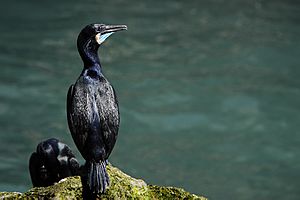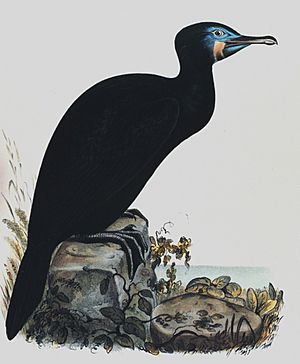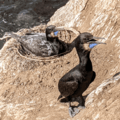Brandt's cormorant facts for kids
Quick facts for kids Brandt's cormorant |
|
|---|---|
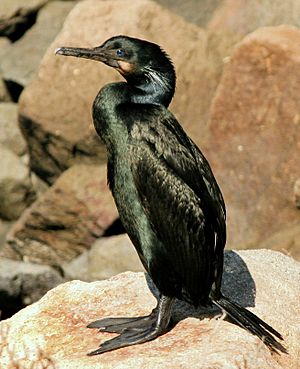 |
|
| Conservation status | |
| Scientific classification | |
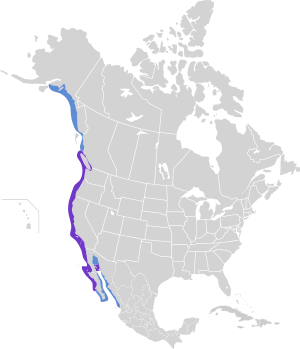 |
The Brandt's cormorant (Phalacrocorax penicillatus) is a type of seabird that lives only in the ocean. You can find these birds along the Pacific coast of North America.
In summer, they live from Alaska all the way down to the Gulf of California. But birds living north of Vancouver Island fly south for the winter. This is called migration.
The scientific name, penicillatus, comes from a Latin word meaning 'painter's brush'. This is because of the white feathers that look like brush strokes on its neck and back when it's ready to breed. The bird is named after a German scientist, Johann Friedrich von Brandt, who first described it in the early 1800s.
Brandt's cormorants are about 34 inches long. They weigh around 4.6 pounds and have a wingspan of 4 feet.
These cormorants hunt for food alone or in groups. They can eat different kinds of small fish. Like all cormorants, they dive underwater to catch fish, using their feet to swim fast. They often eat whatever fish is most common in their area. For example, in central California, they mostly eat rockfish. But off British Columbia, they prefer Pacific herring. Brandt's cormorants have been seen diving more than 36.5 meters (120 feet) deep!
When it's time to breed, adult birds get a bright blue patch on their throat. They build their nests on the ground or on rocky cliffs. Año Nuevo Island is a very important place for seabirds to breed, and many Brandt's cormorants nest there.
Where They Live
Brandt's cormorants live along the Pacific coast of North America. They like places like bays, estuaries (where rivers meet the sea), and lagoons. They usually live in groups.
Breeding and Young
These birds breed between March and August. A female Brandt's cormorant usually lays about four eggs. Both parents help take care of the young birds.
What They Eat
Brandt's cormorants mostly eat fish, like herring and rockfish. But they can also eat other fish, as well as shrimp and crabs. To catch their food, they dive deep into the ocean. They can dive over 200 feet (60 meters) deep! They can hunt for food by themselves or with other cormorants.
Images for kids
See also
 In Spanish: Cormorán de Brandt para niños
In Spanish: Cormorán de Brandt para niños



